How to Find Your Perfect Hair Color

Key Takeaways
- Begin with your canvas and lifestyle to direct color selection. Evaluate hair health, porosity and previous processes and then align upkeep requirements with your lifestyle and budget.
🎨 Discover Your Personal Color Palette
Ready to discover your perfect color palette? Use our expert analysis to identify the colors that make you look and feel your absolute best. From skin undertones to feature matching, find your ideal color combinations.
Find Your Color Palette →- Pick hues that work beautifully with your coloring and undertones. Experiment with a virtual simulator and steer clear of shades that bleach you out or seem severe.
- Commit to your objective before you dye–subtle dimension, soft refine, or a dramatic makeover. Choose highlights, balayage, or allover color based on the style and maintenance you desire.
- Align dye permanence with your commitment and care level. Temporary and semi-permanent suit short experiments and gloss, while demi-permanent and permanent support gray coverage, depth, and enduring transformation.
- Guard hair health at every turn for color that endures and shines. Prep with strand tests and deep conditioning, then preserve with color-safe products, less heat and UV and chlorine protection.
- Compare at-home vs salon depending on how complex and risky it is. Kits for easy touch ups and pro for heavy lightening, color corrections or complex processes for guaranteed safe, even results.
Cool skin goes with ash brown or mocha or blue black. Warm skin pulls golden brown, caramel or copper. Neutral skin pulls off most shades with gentle contrast.
To match undertone, test silver vs. Gold jewelry and wrist vein color. For low maintenance, choose colors within 1–2 levels of your natural. If you're game for something audacious, experiment with a semi-permanent hair color first.
Below, our guide shares swatches, upkeep advice and product picks.
📚 Recent Articles
Key factors for your hair dye
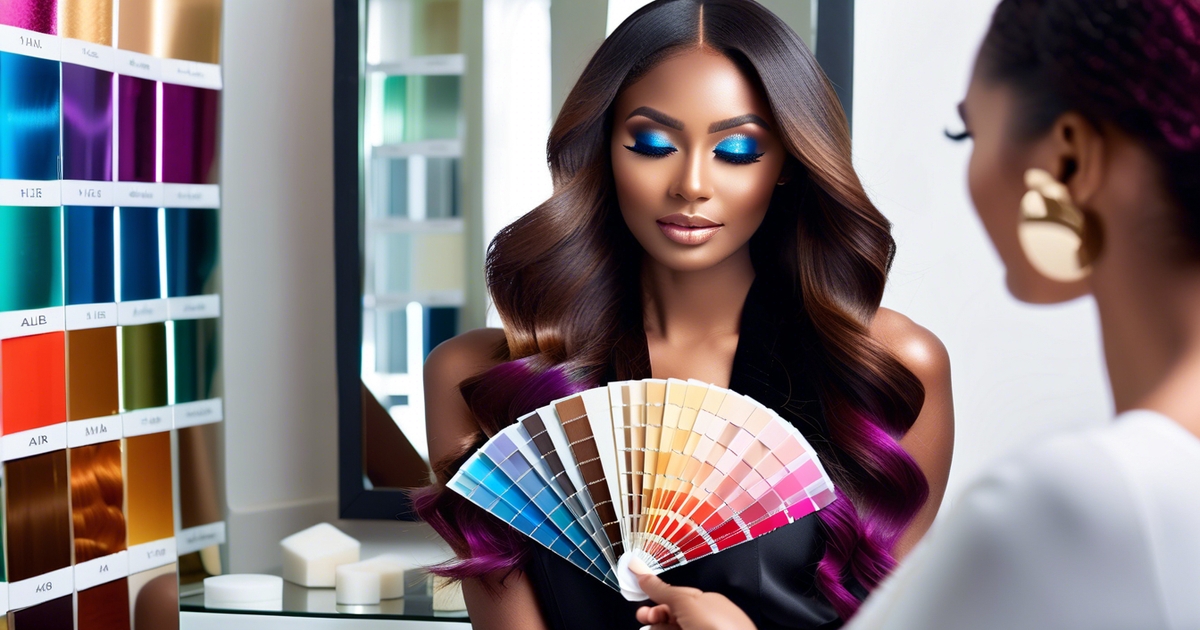
A savvy color decision begins with your baseline, lifestyle, skin, and ambitions. Consider using home hair dye to achieve a color you can maintain while safeguarding hair integrity.
1. Your canvas
Moisturized, smooth strands absorb dye more uniformly, so the prep matters. Treat with a hydrating mask or leave‑in 24 hours prior to dye day to plump the cuticle. Avoid washing 24–48 hours prior to home color so natural oils protect your scalp.
If hair is rough or snaps, treat prior—strong hair holds shade better and fades slower than usual in the 6–8 week range. Check porosity: high‑porosity hair (often bleached or curly) drinks dye fast and can go darker. Low‑porosity hair may need longer processing.
Note history: virgin hair lifts and deposits predictably. Colored hair can band. Bleached hair absorbs tone quickly. Try a strand first to prevent over-toning. Know levels: color sits on a 1–10 scale (1 black, 10 lightest blonde).
You can generally shift 1–2 levels with permanent color at home — bigger lifts require a pro. Match formula to status–semi‑permanent for gloss, demi for low‑commitment blend, permanent for gray or bigger shifts.
Texture and thickness change results. Fine hair goes fast, coarse may require additional time or a more rich formula. Enumerate special attributes like resistant grays at the temples or sun‑lightened ends so you can adjust timing or pre‑soften those areas.
2. Your lifestyle
Choose a color for your schedule, not just your whim. If you desire low maintenance, go for expensive brunette, soft black, or natural blonde with shadowed roots. They transition seamlessly as they grow out.
Sun, swim and hot air accelerate fading. If you sweat outdoors or swim frequently, lean warmer or deeper shades and employ UV caps and cold rinses. Most shades appear their best through 8 weeks, then fade, with glosses scheduled between full color.
Home vs. Salon considerations:
- Budget: box/demi for small shifts; pro for lifts/corrections
- Time: at‑home for quick root blends; salon for multi‑step processing
- Risk: allergies (watch for PPDs) and uneven lift at home
- Tools: salon offers foils, balayage, bond builders, toners
3. Your skin
Determine undertone–warm, cool, or neutral–by how gold or silver jewelry looks, or through veins and foundation matches. Warm skin adores gold, copper, mahogany; cool looks great with ash and burgundy; neutral can flex both with soft balance.
Try out the depth and tone with your eyes and brows with our virtual color simulator. Quick map:
- Fair cool: ash brown 5–6, icy beige 8–9, burgundy 4–5
- Fair warm: honey blonde 8, copper 6–7, warm brown 5
- Medium cool: mushroom brown 6, blue‑black 1–2, beige 7
- Medium warm: caramel 6–7, mahogany 4–5, golden 8
- Deep cool: violet‑black 1–2, cool espresso 2–3, plum 4
- Deep warm: chestnut 4–5, bronze brown 3–4, warm auburn 4–5
Stay away from tones that battle your undertone – hard clashes can do a number on your complexion. Be half a shade lighter each time to facilitate grow‑out and lessen fiber stress.
4. Your goal
Define the change: bold shift, soft refine, or gray blend. Choose the finish—bold statement color, root‑stretch natural, or trendy like copper cashmere.
Choose placement: allover for impact, highlights for brightness, balayage for soft lift, or dimensional mixes for depth. Match shade to how you dress and want to feel – confident – these are the choices you can rock with everything, every day, fuss-free.
Patch test first to rule out PPD sensitivity!
Explore hair color ideas
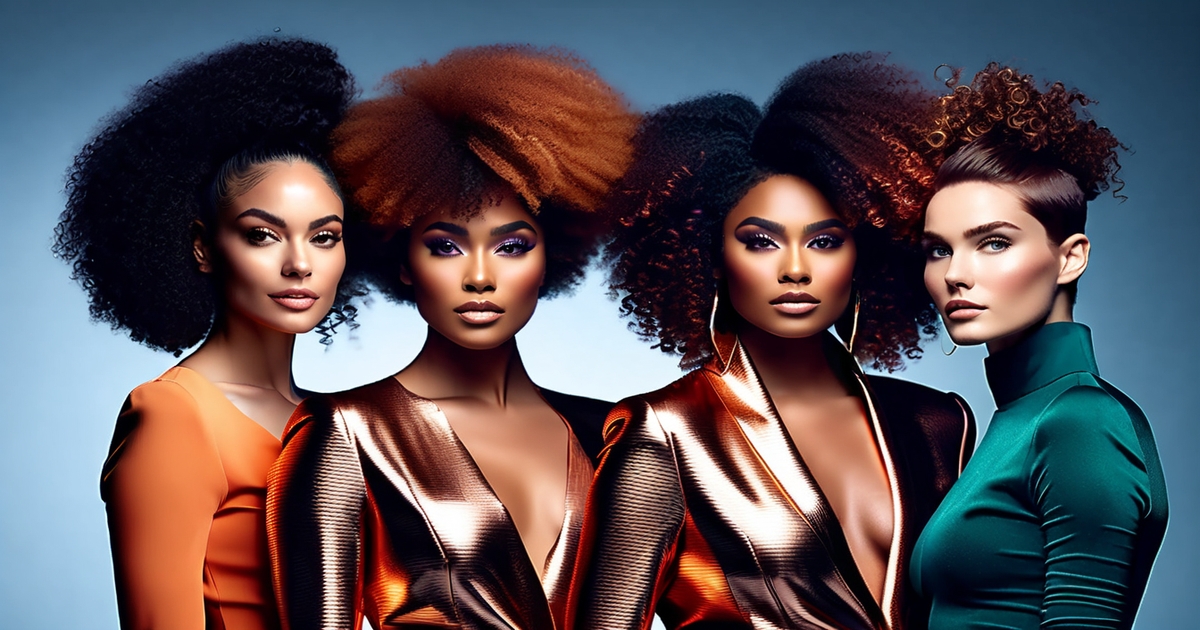
A good color idea starts with real life: your skin tone, eye color, natural base, and the time you want to spend on upkeep. Draw inspiration from fashion magazines, celebrities, or cultural styles, but polish it your own with a stylist or a home hair color kit. If online pics are too overwhelming, experiment with home hair dyes, then decide.
- Classic brunette blends: espresso, mocha, soft ash brown
- Modern blondes: honey, beige, champagne, Nordic pearl
- Reds and coppers: cinnamon, bright copper, strawberry, cherry red
- Pastels: rose, lilac, mint, soft peach
- Seasonal swaps: warm caramel for summer, cool mushroom brown for winter, copper for autumn, vanilla blonde for spring
- Texture pairings: ribbons of caramel on curls, ash lights on straight hair, copper melt on waves
Natural hues
Classic colors work because they reverberate hues you already possess. Honey blonde lifts warmth without glare, praline brown straddles gold and ash for balance, and soft natural red complements fair to medium skin with green or hazel eyes.
On curls, some caramel lights on the crown give you lift. On straight hair, micro‑highlights about 0.5 cm wide read fresh. For coils, brush lowlights one tone deeper to shape face.
Match undertones: warm skin favors golden beige, caramel, or copper-red; cool skin reads best with ash brown, sandy blonde, or a muted red; neutral can flex either way. Throw in some subtle highlights or lowlights 2-tones from your base for depth. It photographs natural in daylight and grows out great.
Maintenance remains light with demi‑permanent formulas that wash out in 6–8 weeks. If you're uncertain, bring magazine tears or a cultural reference—think earthy browns à la hippie chic, old school-style—in to your consult so your colorist can map tone and placement.
Bold statements
Bold reds, neon blues, and fiery copper get noticed; they require a strategy for pigment retention and fading. Pre‑lightening to pale yellow enhances payoff for blues and purples, while copper tends to pop on darker bases with fewer lifting steps.
Experiment with at‑home kits for mini areas—a money piece, tips, or a solo panel—before a complete head. For saturated, vibrant looks, a professional colorist can lift evenly, fill in porous patches, and lock in a custom blend so the tone carries further between shampooing.
Quirky ones like emerald, ultraviolet, or neon coral can salute runway or street scenes. Rinse cool, wash apart, and sulfate‑free care to maintain color vibrancy.
Subtle enhancements
Soft balayage, face‑framing lights, or gentle ombré add polish with no harsh line. Position your darkest pieces around your face and the lightest near your cheekbones to highlight and brighten your eyes.
Demi-permanent dyes bring shine and tonality with minimal damage. A lot of people try a demi first to determine whether beige blonde or golden honey flatters their skin, then make the jump later.
Glosses and toners correct brassy shades, blend in those pesky early grays, or liven up dulled color in 10 – 20 minutes. At home, begin with a sheer gloss one shade warmer in winter and one cooler in summer.
When concepts blur online, employ a pro consult, a fast quiz, or a small at‑home test strand to trim down options with less tension.
Understand dye permanence
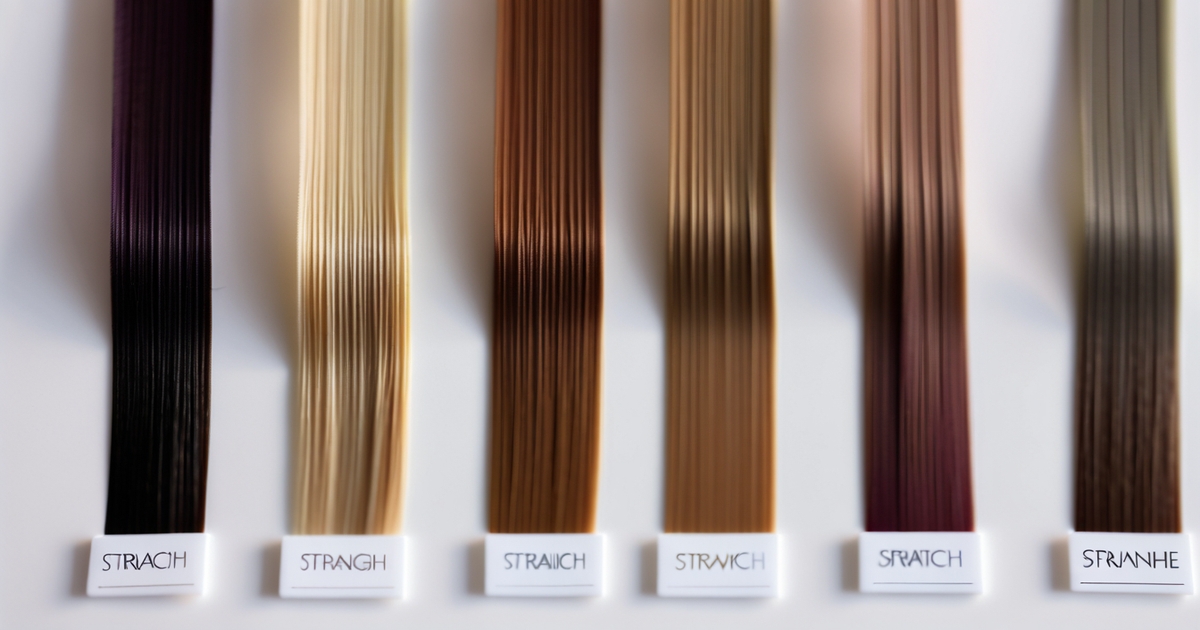
Hair color, including home hair dyes, comes in four permanence levels. Each type alters the shade's permanence, fading process, and care, with selection based on hair condition and desired maintenance frequency.
Temporary
- What: Surface-only color that sits on the cuticle, such as sprays, chalks, and gels. No developer.
- Why: Trial bold shades without risk. Perfect for parties or photos.
- Longevity: 1–2 shampoos, then it's gone; sweat or rain can rub off.
- Fade pattern: Even wash-out with minimal stain on light hair, though pastels may cling slightly.
- Maintenance: None beyond gentle cleansing. Protect light fabrics with a towel.
- Pros: Instant, reversible, kid-friendly, no damage.
- Cons: Transfers, limited vibrancy on dark hair without light base, short wear time.
Apply home hair dye when you want neon tips for a festival or a darker tint on edges for a night out.
Semi-permanent
Go with this for a gentle color, luster and shimmer change. It's a gentle formula, perfect for fine or compromised hair, and does not employ aggressive developer. It covers the cuticle, so it washes out slowly over 4–12 washes, based on porosity, water temperature and shampoo.
Perfect for reviving a dulled permanent color in between salon trips, toning brassy blondes, or infusing warmth into brunettes with no long-term commitment. Vegan and cruelty-free lines tend to have conditioners that tame frizz and sometimes stretch color life a little.
Pros: Low commitment, low damage, rich shine. Cons: Limited gray coverage, won't lighten, may stain towels. With a little effort to keep water lukewarm and wash less often, you can pull results even further.
Demi-permanent
- What: Low-volume developer opens the cuticle slightly for deeper deposit than semi, yet it does not lighten natural pigment.
- Why: Blend early grays, add depth to curls, tone highlights, or soften harsh lines without distinct regrowth.
- Longevity: Longer than semi, often 6–8 weeks of visible tone, then soft fade.
- Fade pattern: Natural-looking shift; less banding than permanent.
- Maintenance: Gloss every 6–10 weeks; sulfate-free care helps.
- Pros: Better gray blending, richer tone, minimal damage.
- Cons: Still won't lift, very stubborn grays could still sneak in, depending on porosity results may be different.
This is a bridge pick for those seeking a home hair dye with more staying power.
Permanent
For drastic transformations and 100% gray coverage, permanent color changes the internal pigment. Anticipate longevity until roots appear or you refresh color; most colors stay vibrant for 8+ weeks, but regrowth typically requires touching up every 4–6 weeks.
Go even one visible shade lighter and six-week bleach-root touchups are the norm. Lightening, balayage or ombré may require several processes and bleach has to be handled gently in order not to harm it.
Pros: Lasting change, strong coverage, widest palette. Cons: Regrowth lines, higher upkeep, possible dryness. Depending upon your hair and upkeep, outcomes differ.
Checklist and table
- Longevity: Temporary (1–2 washes), Semi (4–12 washes), Demi (6–8 weeks), Permanent (until regrowth).
- Fade: Temporary even; Semi soft; Demi natural; Permanent with regrowth line.
- Maintenance: Temporary minimal; Semi low; Demi moderate; Permanent high with roots.
- Ideal uses: Try-out color; shine/refresh; gray blend/tone; full change/coverage.
- Expected results: No lift, no lift, no lift, deeper tone, lift/deposit with touch-ups.
Prioritize your hair's health
Healthy hair takes color MORE easily, retains shine longer, remains soft. Chemical exposure from dye can cause weakness, breakage, brittleness, and dryness, so planning care pre- and post-color is worth the time. This is even more significant if you color frequently.
A customized ritual—tailored to your texture, porosity, and scalp requirements—gets you to your color without sacrificing resilience or spring.
Before coloring
Begin with a strand test. Combine a little dye and paint it on a clandestine 1 cm-wide lock. Inspect the shade outcome, timing and any scalp/skin reaction within 48 hours. If you sense itch, burn or redness, don't go on.
Cleanse to strip deposits so color grabs uniformly. With a mild clarifying shampoo once, concentrate on roots and mid-lengths, then rinse thoroughly. If hair feels dry, follow with a light, silicone-free conditioner. Skip the heavy oils 5 days before you color.
Construct fortitude with deep conditioning. Go for masks that combine hydration and fortification, like glycerin-, aloe-, and a low-dose protein such as hydrolyzed keratin-based formulas.
Spritz mid-lengths to ends for 10 – 20 minutes, 1 – 2x in the week before dye day. Not only do hair masks provide extra moisture, they give your strands a protective cushion that minimizes breakage.
Organize your irons and read the insert. Collect gloves, non-metal bowl, brush, clips, timer, old shirt, and petroleum jelly for your hairline.
READ THE ENTIRE DIRECTIONS — processing time, allergy warnings, etc. Mini prep steps reduce risk and stress. Consistent trims every 6–8 weeks and steady scalp care contribute.
Fresh, even scalp = improved growth and less splitting ends that shred when colored.
After coloring
Turn to a sulfate-free, color-safe shampoo and coordinating conditioner. These soothe the cuticle and assist color longevity. Seek out tags that say "color care" or have UV filters or amino acids.
Extend wash days. Try to wash two to three times a week, and use cool or lukewarm water to help keep fading at bay.
Dry shampoo in between washes may keep roots fresh without sapping color. Hydrate with masks and leave-ins. Hydrate with a mask once a week for 10–15 minutes, and finish by applying a light leave-in or a few drops of hair oil to damp ends, sealing water in.
Daily care with a moisturizing conditioner and a few drops of oil smooths and restores. Protect your color from sun and pools. Rock a cute hat, use UV-protectant sprays and rinse your hair with fresh water before and after you dive into the pool.
Minimize hot tools; when you do style, apply heat protectant and use the lowest effective setting. Prioritizing your hair's health with minimal chemical and heat exposure keeps it healthy and vibrant.
The psychology of color
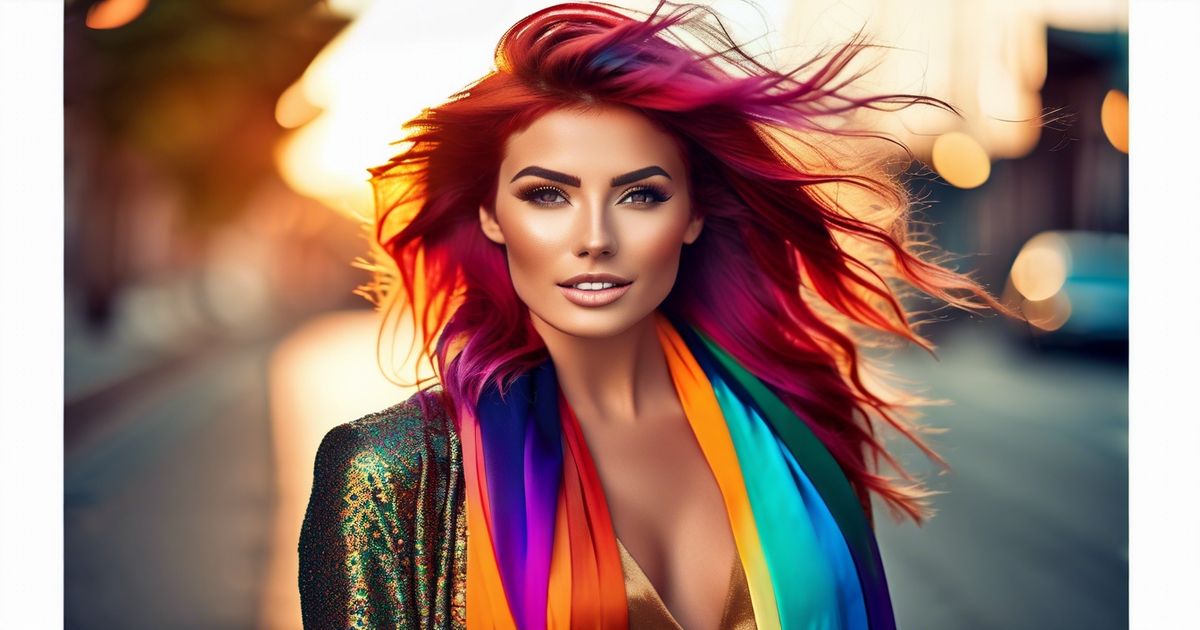
Hair color operates like a subtle cue, influencing your mood and how people perceive you. Whether using home hair dyes or opting for salon hair color, it acknowledges culture, mood, and identity, welcoming transformation unvoiced.
Mood
Warm shades—golden blonde, copper, strawberry, auburn—tend to ignite vitality and positivity. They reflect light, enliven skin, and add a sun-warmed touch during the dreariest of months. If you hunger for zip, a creamy copper sheen can boost the afternoon without an entire reset.
Cooler tones such as ash, mushroom and platinum lean serene and elegant. They tone down warmth, soften contrast, and come off as sophisticated. Going cooler often works well for high-heat climates or jam-packed seasons when you need less hassle and more simplicity.
Align your tone with the vibe you're looking to cultivate. Choose deeper crimsons for innovation bursts, honey for a networking expansion, platinum blonde for concentration. In winter, richer browns are snuggly, in summer, wispy beige blonde is wind-bleached.
Color can spark concepts. Sometimes a new rose-gold glaze can inspire a new style, a new habit, a new pitch. Little shifts still matter.
Perception
Hair color frames the face, so it can soften or sharpen. Golden reflect lends glow and roundness, cool depth contrast and edge. A cinnamon brunette can warm cool undertones and an ash brunette can de-ruddy.
Lighter colors tend to read youthful, darker colors tend to lean polished. These are general tendencies, not laws. In Western narratives, blonde is associated with young and vibrant, in part because it's uncommon and mythical. Elsewhere, black hair denotes timeless elegance and tradition.
Red can indicate a strong will in the UK and Ireland, where it's more prevalent. Use highlights and lowlights carefully to even out the face. Put light near the eyes to bring them forward. Accentuate lowlights under the jaw to ground a sharp chin.
A face-frame 2-3 tones lighter than your base can simulate symmetry even if your features are asymmetrical. Color tips first impressions as well. We make snap reads in seconds, and hair factors into that gut call.
Some colors get more remarks, brown is average and gets overlooked because it's ubiquitous, blonde can draw attention, for good or bad.
Confidence
The proper hue can boost confidence. When tone, depth and placement harmonize with your skin, eyes and your life, you look pulled together without even trying. That calm radiates in your voice and your stride.
Choose colors that reflect your cadence. If you swim a lot, opt for low-maintenance caramel ribbons instead of full bleach. If your style is minimal, a smooth espresso or gentle black can ring authentic, and in certain cultures, black pays homage to heritage and persona.
I've seen quiet shifts spark big wins: a client moved from flat brown to chestnut with hazel-bright highlights and landed more on-camera work within weeks. Another experimented with soft copper and was courageous enough to propose a new project and succeeded.
Follow the path. Save photos, jot down compliments and track how each shade performs at work, on Zoom calls and in sun. Patterns surface, confidence builds from evidence.
At-home vs professional color
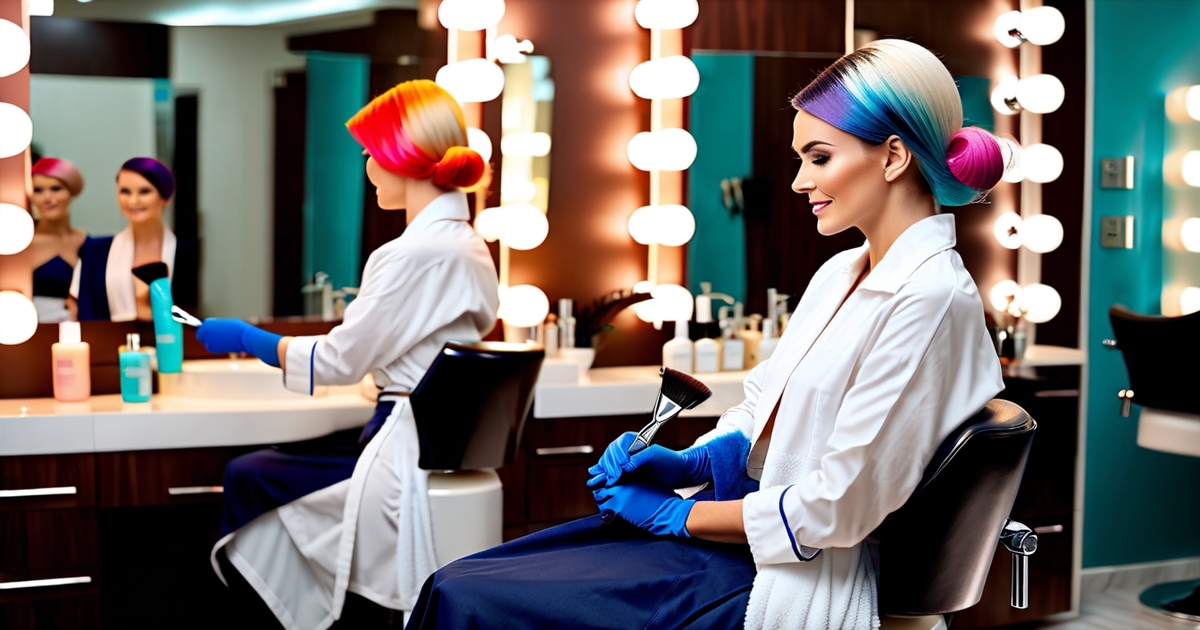
Either path can work. It's a decision based on price, convenience, ability, and the extent of the transformation.
At-home kits prevail on price and speed. A box is a fraction of the price of a salon trip, and you color whenever it fits your schedule. This suits small shifts: cover of a few greys, refresh of the same shade, or a slight darken by one to two levels.
Box dyes are one-size-fits-all. They rely on powerful, one-size-fits-all formulas that ignore hair type, texture, or previous coloring. Thick curls, fine hair and porous ends all respond differently. That's why results can look flat, skew warm or cool or fade fast. Home color tends to fade prematurely — meaning more re-dye and more cost over time.
Home color is difficult to position accurately. Missing a few spots, banding near the roots and stained skin do occur. It's hard to fix these mistakes at home — often times they require a professional to rectify.
Salons are more expensive, but you're paying for expertise, precision, and a strategy. Professional stylists apprentice for years and learn how pigment behaves inside different hair types. They measure your base, the level you desire, previous chemical history and the shape of your cut.
Then they blend a bespoke formula and tweak developer strength by zone. This helps them nail the color in one sitting and minimize subsequent touch-ups. Pros position color to flatter your face, with foils, balayage or a combination of both. The mix appears gentle, grows out nicely, and maintains dimension that home color frequently pulverizes.
When hair is delicate a stylist can decelerate, infuse bond care, shield ends — hard to do with one tube at home. Go to a pro when you want a major change: dark to light, light to dark by more than two levels, grey blending rather than full cover, color correction, or vivid shades like copper, red, and fashion tones.
Get assistance with textured hair with multiple curl patterns, and with hair that has old dye/bleach/henna. Advanced work requires eyes on the hair, strand tests, and steps layers.
If you color at home, read the leaflet and abide by it. Conduct a patch and strand tests. Section your work, apply 20–30 ml of barrier cream along the hairline and time with a clock, not guesstimates.
Begin where hair is darkest or most resistant, then proceed to mids and ends. Rinse thoroughly, then go sulfate-free with a gentle shampoo 24–48 hours later to help seal in color. Trace shade and brand notes so you can repeat what worked.
Consider, weigh budget, risk and your own talent. Tiny adjustments at home, massive changes with a pro.
Conclusion
To sum it up, go for a color that complements your complexion, hair objective and daily life. Go light if you're iffy. A gentle brown with hot gold compliments a lot. Cool black provides crisp contrast. A rose brown sounds exciting but conservative. In scorching sun, adorn a hat and a UV spray to help color stay vibrant. For curls, low heat and rich masks. For big changes, leave it to a pro.
Friend took a stab at a cool chestnut in spring. Her skin appeared luminous. She maintained it with a blue shampoo weekly. Easy actions that made it stick.
Ready to take your pick? Leave your hair type, skin tone and desired vibe. I'll provide three shade picks and care tips you can implement immediately.
Frequently Asked Questions
What factors should I consider before choosing a hair dye?
Start with your natural hair color and consider your skin undertone and hair texture. Assess your desired maintenance level and budget while using a home hair color kit. Always check for allergies with a patch test and match the shade to your style aspirations.
Which hair color ideas work best for first-time dye users?
Select shades within two tones of your natural shade when using home hair dyes. Experiment with semi-permanent glosses, balayage, or baby lights, as they look natural and grow out softly, ensuring a lower maintenance hair color experience.
What's the difference between temporary, semi-permanent, and permanent dyes?
Here's the temporary stuff, which washes out in 1–2 shampoos. Semi-permanent home hair dyes wash out in 6-12 washes and add shine. Demi-permanent lasts with low developer. Permanent color changes the hair's structure for long-term color but requires maintenance color for roots. Pick according to dedication and hair wellness.
How do I keep my hair healthy when dyeing?
- Deep condition once every week.
- Opt for a sulfate-free, color-safe shampoo.
- Reduce heat styling and use heat protectant consistently.
- Space out color appointments.
- Include bond-builders if bleaching.
- Trim often to avoid split ends.
- Moisturize and eat protein to build hair strength.
Can hair color affect how others perceive me?
Yes. Warmer tones in home hair dyes can seem welcoming and energetic, while cooler tones may come across as polished or calm. Dark hair colors look more dramatic, whereas lighter shades may appear gentler. Choose a color that fits your personal brand, lifestyle, and the message you want to communicate.
Should I color my hair at home or go to a professional?
For drastic makeovers, gray coverage, or color correction, it's best to go professional. However, for small shade shifts or root touch-ups, home hair dye can be a suitable option. Experts recommend following directions, conducting a home hair color test, and starting conservatively to minimize potential harm.
How do I test a hair color before committing?
Of course, do a strand test with the same home hair dye and timing. Use virtual hair color tools for a glimpse of your ideal color. Experiment with semi-permanent glosses or home hair color products to start. Check in natural light to reduce surprises and guide you toward a flattering, manageable shade.